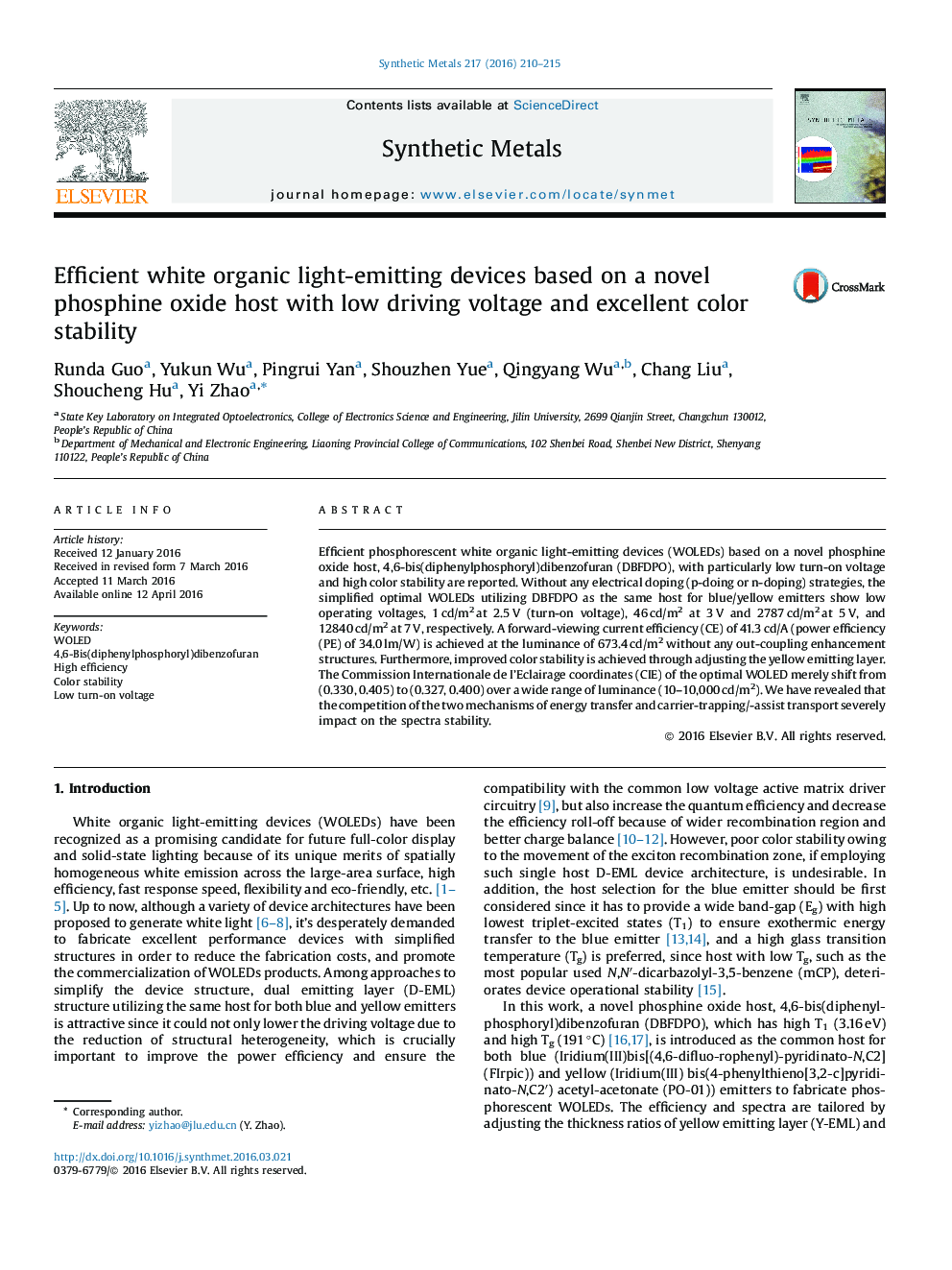| Article ID | Journal | Published Year | Pages | File Type |
|---|---|---|---|---|
| 1440192 | Synthetic Metals | 2016 | 6 Pages |
•Efficient and simplified WOLEDs based on a novel host, 4,6-bis(diphenylphosphoryl)dibenzofuran (DBFDPO), are demonstrated.•The WOLEDs exhibit low turn-on voltage and excellent color stability.•The underlying mechanism that impact on color stability is finally clarified and discussed in detail.•A thin Ir(ppz)3 interlayer is introduced to obtain balanced white emission and improve the efficiency.
Efficient phosphorescent white organic light-emitting devices (WOLEDs) based on a novel phosphine oxide host, 4,6-bis(diphenylphosphoryl)dibenzofuran (DBFDPO), with particularly low turn-on voltage and high color stability are reported. Without any electrical doping (p-doing or n-doping) strategies, the simplified optimal WOLEDs utilizing DBFDPO as the same host for blue/yellow emitters show low operating voltages, 1 cd/m2 at 2.5 V (turn-on voltage), 46 cd/m2 at 3 V and 2787 cd/m2 at 5 V, and 12840 cd/m2 at 7 V, respectively. A forward-viewing current efficiency (CE) of 41.3 cd/A (power efficiency (PE) of 34.0 lm/W) is achieved at the luminance of 673.4 cd/m2 without any out-coupling enhancement structures. Furthermore, improved color stability is achieved through adjusting the yellow emitting layer. The Commission Internationale de I’Eclairage coordinates (CIE) of the optimal WOLED merely shift from (0.330, 0.405) to (0.327, 0.400) over a wide range of luminance (10–10,000 cd/m2). We have revealed that the competition of the two mechanisms of energy transfer and carrier-trapping/-assist transport severely impact on the spectra stability.
Graphical abstractFigure optionsDownload full-size imageDownload as PowerPoint slide
